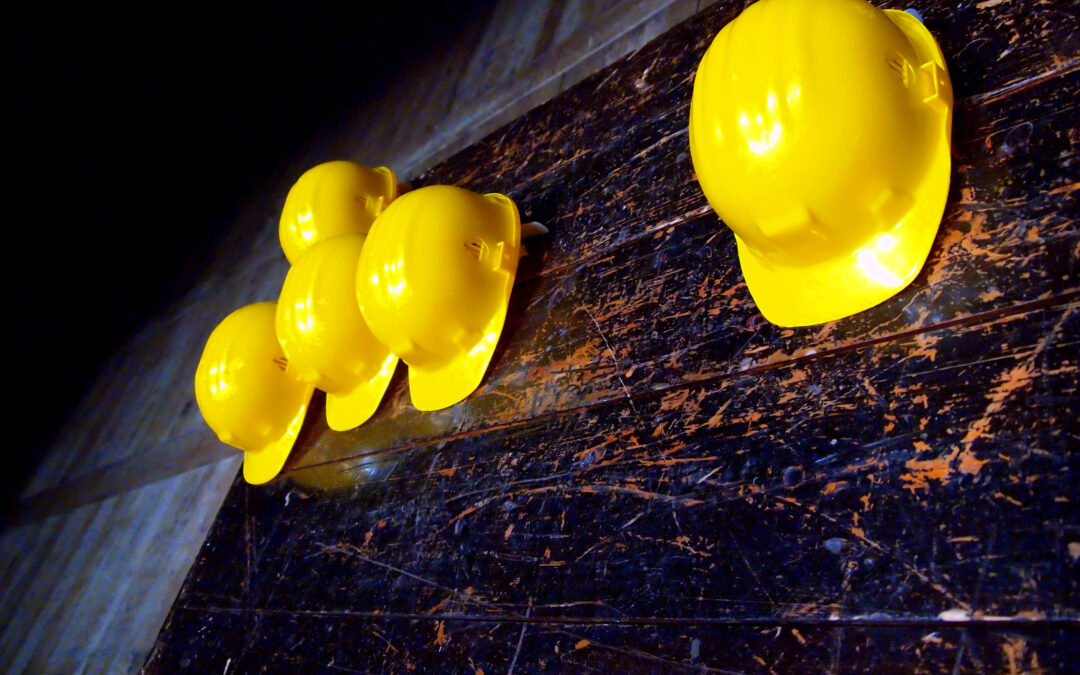Commercial construction sites are high-risk environments where safety must be a top priority. With heavy machinery, elevated work areas, and numerous workers operating simultaneously, the potential for accidents is significant. Implementing strict safety measures not only protects workers but also ensures compliance with legal requirements, minimizes project delays, and enhances overall productivity.
Key Aspects of Site Safety
1. Compliance with Safety Regulations
Government agencies like OSHA (Occupational Safety and Health Administration) establish regulations to ensure workplace safety. Adhering to these guidelines helps prevent legal issues and reduces liability for construction companies.
2. Personal Protective Equipment (PPE)
Workers should always wear proper PPE, including hard hats, safety goggles, gloves, high-visibility vests, and steel-toed boots. PPE acts as the first line of defense against potential hazards on-site.
3. Training and Awareness Programs
Regular training sessions on hazard recognition, emergency response, and proper equipment usage are crucial. Well-informed workers are less likely to make mistakes that could lead to serious injuries.
4. Proper Equipment Handling
Heavy machinery, power tools, and scaffolding require skilled operation. Only trained and certified personnel should handle such equipment to minimize accidents and ensure smooth operations.
5. Fall Protection Measures
Falls are one of the leading causes of injuries in construction. Installing guardrails, harnesses, and safety nets can significantly reduce the risk of falling from heights.
6. Clear Signage and Site Organization
Marking hazardous areas, exit routes, and restricted zones with clear signage enhances site safety. A well-organized worksite prevents confusion and ensures smooth workflow.
7. Emergency Preparedness
Having a well-defined emergency response plan, including first aid stations, fire extinguishers, and evacuation procedures, can make a critical difference in saving lives during accidents.
Benefits of Prioritizing Site Safety
- Reduced Workplace Injuries: A safer environment leads to fewer accidents, ensuring workers remain healthy and productive.
- Lower Financial and Legal Risks: Companies that prioritize safety avoid fines, legal battles, and compensation claims.
- Improved Productivity: Safe sites allow workers to focus on their tasks without fear of injury, leading to better efficiency.
- Enhanced Reputation: A commitment to safety builds trust among clients, investors, and workers, improving a company’s brand image.
Site safety in commercial construction is not just a legal obligation, it is a fundamental responsibility that affects the well-being of every worker and the success of every project. Construction sites are inherently hazardous, but with proper planning, rigorous safety measures, and a strong safety culture, risks can be minimized significantly.
Investing in site safety leads to numerous benefits beyond just injury prevention. It fosters a work environment where employees feel secure, valued, and motivated to perform at their best. A company that prioritizes safety earns the trust and loyalty of its workforce, reducing employee turnover and enhancing overall job satisfaction. Additionally, a strong safety record improves a company’s reputation, attracting clients who value professionalism and responsible project management.
From a financial perspective, prioritizing safety helps construction firms avoid costly legal battles, fines, insurance claims, and project delays caused by accidents. A safe and well-organized construction site ensures efficiency, reduces downtime, and keeps projects on schedule and within budget.
Ultimately, safety is a shared responsibility that requires collaboration from all levels of an organization, from project managers and supervisors to workers on the ground. By making site safety a core value rather than an afterthought, the construction industry can continue to evolve, ensuring that every worker goes home safely at the end of the day.
CREED LA is a not-for-profit coalition of labor groups concerned with sustainable development plans that comply with state and local laws in Southern California. For more news on commercial construction in Southern California and how Creed LA efforts are transforming the impact on your community visit https://creedla.com.

